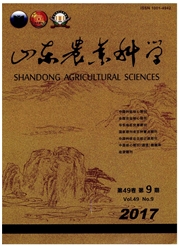

 中文摘要:
中文摘要:
本研究共获取196个荞麦分布点记录,采用相关性以及随机森林变量重要性分析,筛选出气候、土壤和地形三种类型15个环境评价因子,结合随机森林模型,预测我国荞麦的潜在种植区域,并划分荞麦适宜种植分布区,同时依据随机森林模型给出的变量重要性,分析影响荞麦生长的主导因子。结果表明,随机森林模型预测的我国荞麦适宜种植分布精度较高,荞麦的种植适宜区分布较广,从东北到南方的广阔地区均有分布,但荞麦高适宜种植区范围较小。气候因子对荞麦生长的影响最大,主导因子为日照时数(SH)、年均温(Bio1)和最热季降水量(Bio18),通过绘制主导因子的响应曲线,进一步明确其对荞麦生长的影响。本研究可为合理规划我国荞麦种植提供数据与参考。
 英文摘要:
英文摘要:
In this study, 196 buckwheat distribution records were obtained. The correlation and variable importance of random forests (RF) analysis were used to choose at 15 environmental evaluation factors that containing climate, soil and terrain types. Combined with RF model, the distribution of potential cropping area was predicted, and then the suitable cropping regions of buckwheat were regionalized. The dominant factors affecting growth of buckwheat were analyzed based on the variable importance of RF. The results showed that the prediction accurate of buckwheat suitable cropping distribution was higer. The suitable regions distributed from the northeastern to the southern of China, but the highly suitable region was smaller. The climate factors had the largest influences on buckwheat growth, and the dominate factors were sunshine hours (SH), annual mean temperature (Biol) and precipitation of warmest quarter (Biol8). Their response curves were made to clarify its impact on the growth of buckwheat furtherly. This study might provide a reference for the rational cultivation planning of buckwheat in China.
 同期刊论文项目
同期刊论文项目
 同项目期刊论文
同项目期刊论文
 期刊信息
期刊信息
